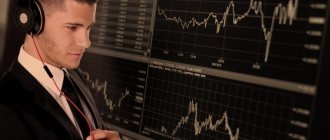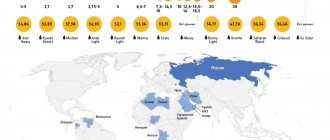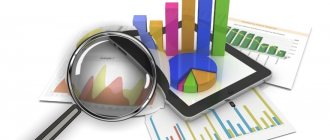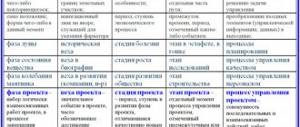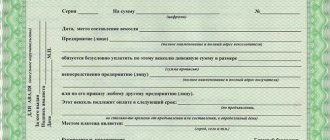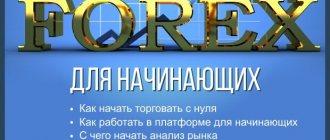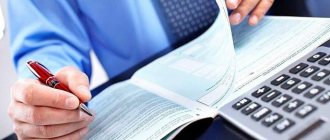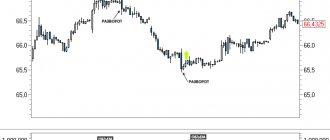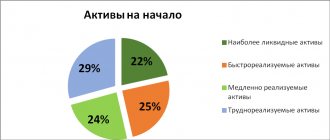Price to book ratio
The price-to-book ratio (P/B) is a popular way to compare market value and book value.
It is equal to the price per share divided by the book value per share. For example, a company has a P/B of one when book and market valuations are equal. The next day, the market price falls, so the P/B ratio becomes less than one. This means that the market valuation is less than the book value, so the market may undervalue the stock. The next day, the market price skyrockets and creates a P/B ratio greater than one. This tells us that market valuation is now higher than book valuation, indicating a potential revaluation. However, the P/B ratio is only one of several ways investors can use book value.
What is the book value of fixed assets?
The book value of fixed assets is an indicator that demonstrates how much all the company's assets are worth according to accounting data (this also includes raw materials, semi-finished products, as well as work in progress, in other words, everything that is an asset of the company).
Information on the status of the book value of fixed assets can be obtained by looking at line 1600 of the balance sheet (BB).
All assets are divided into 2 types: current and non-current.
- Working capital is all the company’s property, which completely transfers its value to the produced goods in one turnover.
- Non-current assets are all the company’s property that generates profit and is involved in production during several turnovers of current assets. By the way, fixed assets are part of the company's assets.
Thus, the book value of a firm's fixed assets is equivalent to the sum of current and non-current assets.
The balance sheet value of fixed capital is included in the balance sheet value of the enterprise's assets.
Sample certificate of the book value of the company's assets.
Special Considerations
Most public companies meet their capital needs through debt and equity. Companies obtain debt by taking out loans from banks and other financial institutions or issuing interest-bearing corporate bonds. They typically increase their share capital by listing shares on a stock exchange through an initial public offering (IPO). Sometimes companies obtain equity capital through other measures, such as follow-on issues, rights issues, and additional sales of shares.
Borrowing capital requires interest payments and possible repayments of loans and bonds. However, equity does not create such obligations for the company. Stock investors seek dividend income, or capital gains, from rising stock prices.
Lenders who provide needed capital to a business are more interested in the value of the company's assets. After all, they are most concerned about the payout. Consequently, lenders use book value to determine how much capital to lend to a company since the assets are good collateral. The balance sheet can also help determine a company's ability to repay a loan within a certain period of time.
On the other hand, investors and traders are more interested in buying or selling shares at a fair price. When used together, market value and book value can help investors determine whether a stock is fair, overvalued, or undervalued.
Book value of assets: how to calculate and where to see this indicator on the balance sheet?
The book price of a firm's capital is calculated as the sum of working and non-current capital:
Sat=Co+St;
Where:
- Sat – balance sheet value of the company’s capital
- Co – balance sheet value expression of working capital
- St – balance sheet value of non-current assets
How to make real money on Instagram? Step-by-step instructions are contained in the publication at the link.
Example 1
Let him have current assets, the value of which can be seen in line 1200 BB, in the amount of 300,000 rubles. The value of non-current assets (the value of this parameter can be seen in line 1100 BB) is 700,000 rubles.
The book value of assets is:
Sat=Co+St=300,000 rub. + 700,000 rub. = 1,000,000 rub.
Where:
Sat – balance sheet value of the company’s assets
Co – cost of current assets
St – value of non-current assets.
A sample certificate of the book value of a company's fixed assets.
Example 2
Let enterprise “B” have current assets worth 200,000 rubles, and non-current assets worth 500,000 rubles. The balance sheet value of the funds will be equal to the sum of non-current and current assets:
200,000 rub. + 500,000 rub. = 700,000
Thus, the balance sheet value of the funds of enterprise “B” will be equal to 700,000 rubles .
The essence
Both book value and market value provide meaningful insight into a company's valuation. Comparing the two can help investors determine whether a stock is overvalued or undervalued based on its assets, liabilities, and earning power. As with any other financial measurement, the real benefit comes from recognizing the strengths and limitations of book value and market value. An investor must determine when to use book value, market value, or another tool to analyze a company.
The procedure for calculating the book value of fixed assets
Fixed capital is the property of a company that makes a profit and participates in more than 1 production cycle in a relatively unchanged form (excluding wear and tear).
The book value of fixed assets is the monetary value of all fixed assets according to accounting. Why is the phrase “accounting” present here?
For an enterprise, the cost of, for example, equipment will differ from a simple purchase of a means of production due to the fact that for a company the costs of equipment consist of transportation, installation and other costs.
You can find out how much you earn on YouTube for and how to earn real money on your channel in our new article at the link.
Diagram: What is book value?
In accounting, an object can be valued in different ways. For this reason, it is important that equipment on the company's balance sheet, for example, is displayed in accordance with some accounting method. This is due to the specifics of entrepreneurship.
In order to understand how book value is calculated, several categories must be introduced.
The initial value expression of fixed capital is the totality of the costs incurred by the entrepreneur, which contains the costs of:
- Acquisition of a fixed asset
- Its transportation
- Its installation
- Other goals related to the operation of the means of production.
What is profitability and how to calculate the profitability of an enterprise yourself, you can read at the link.
Over time, equipment becomes obsolete (new technologies appear, and its price falls) or simply becomes more expensive due to the specific interaction of supply and demand. For this reason, the value of fixed capital is revalued.
Basic concepts of accounting.
There are a number of types of accounting policies (methodologies for accounting for enterprise assets). With an accounting policy based on the initial price of the accounting object, it is assumed that throughout the accounting period the asset will be accounted for as the difference from the original cost and the amount of depreciation of the fixed asset (depreciation).
An accounting policy, the main principle of which is revaluation, implies that the entrepreneur will conduct regular revaluation of his fixed assets, using the help of experts.
The next category, which must be introduced to fully understand what the book value expression of fixed capital is, is closely intertwined with the type of accounting valuation based on regular revaluation of fixed capital.
What is the responsibility of the chief accountant from 2021 and what changes have occurred in the legislation this year, you can read here.
The replacement cost expression of fixed capital shows how much it will cost an enterprise to create an object of fixed assets at current prices for labor, components, materials and other resources necessary to bring it to working condition, and also takes into account the change in the value of the means of production due to its obsolescence (due to the emergence of new technologies). Calculated based on expert assessments.
The book value of fixed assets can be calculated based on historical cost and replacement cost. The choice of method depends on when the revaluation of fixed assets was carried out.
Scheme for calculating the average annual book value of fixed assets.
If the revaluation was carried out after the commissioning of the main asset, then it is accounted for at its replacement cost, if before - at its original cost. What to do if the fixed asset has already been used, but it appears on the company’s balance sheet for the first time?
In this state of affairs, three different methods are usually used: market (an expert determination of the cost of a means of production based on current market prices), income (based on the calculation of the future total cash flow from the asset, which is the cost of the fixed asset), and the replacement cost method.
The balance sheet value of fixed capital is equal to the sum of all initial and replacement costs of fixed assets of the enterprise.
Sometimes replacement cost is calculated not on the basis of original cost (a figure is calculated to show how the price of an asset has changed and then multiplied by the original cost of the asset), but on the residual value. When choosing, they rely on the specifics of a particular company and current tax standards.
Residual value is a value that is calculated as follows: the amount of depreciation for the actual operating period is subtracted from the original or replacement cost expression of the means of production (in accordance with whether the object was put into operation before or after the revaluation). Thus, the residual value shows the real current value of fixed assets.
A sample business plan with calculations and step-by-step instructions for its preparation are contained in this article.
Example 1
Let the enterprise “Advantage” have machine A, purchased for 100,000 rubles. (including profit tax). Transportation costs amounted to 8,000 rubles, installation costs – 6,000 rubles, other costs – 3,000 rubles. Fixed assets were revalued.
After this, the company bought machine B, the purchase costs of which amounted to 60,000 rubles. (including profit duty), for transportation - 7,000 rubles, for installation - 5,000 rubles, and other expenses amounted to 1,500 rubles.
Since the purchase of machine A, its value has dropped by 20% . Abstracting from the details, let's calculate the book value of fixed assets for this situation. Machine A was put into operation before the revaluation, so it must be accounted for on the balance sheet at its replacement cost.
Replacement cost is equal to the result of the product of the original cost expression of the asset by the obsolescence indicator, which is equivalent to the change in the cost of the means of production, expressed as a percentage.
St = (Zp+Zper+Zm+Id)*Kmi;
Where:
- St – replacement cost
- Salary – purchase costs
- Zper – costs of transporting means of production
- Zm – installation costs
- Id – other costs;
- Kmi – obsolescence coefficient (the obsolescence coefficient in this case is the reduction in the cost of the machine, as a monetary expression of obsolescence)
Using the formula we get:
(RUR 100,000 + RUR 8,000 + RUR 6,000 + RUR 3,000) *0.8 = RUR 93,600 (since the cost has fallen by 20%, the current price is equal to: 1 minus 0.2 – 0.8 of the original cost).
Machine B was put into operation after revaluation, therefore its book value is calculated as its original value, which is according to the formula:
First=Zp+Zt+Zu+Zpr;
Where:
- First - initial cost
- Salary – costs of purchasing a machine
- Zt – costs of transporting the machine
- Zu – costs of installing the machine
- Zpr – other costs;
equal to: 60,000 rub. + 7,000 rub. + 5,000 rub. + 1,500 rub. = 73,500 rub.
The balance sheet value of fixed capital in this situation is equal to the sum of the balance sheet values of machine A and machine B:
RUB 93,600 + 73,500 rub. = 167 100
Thus, the book value of fixed assets of the enterprise “Advantage” is equal to 167,100 rubles.
Sample calculation of the book value of fixed assets in the OS program.

